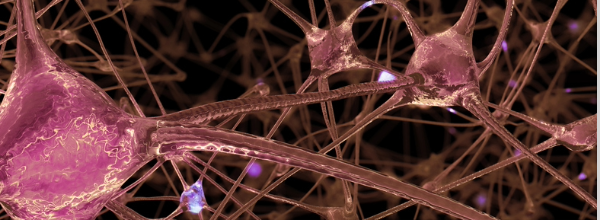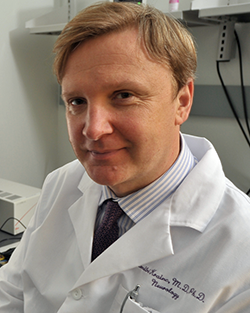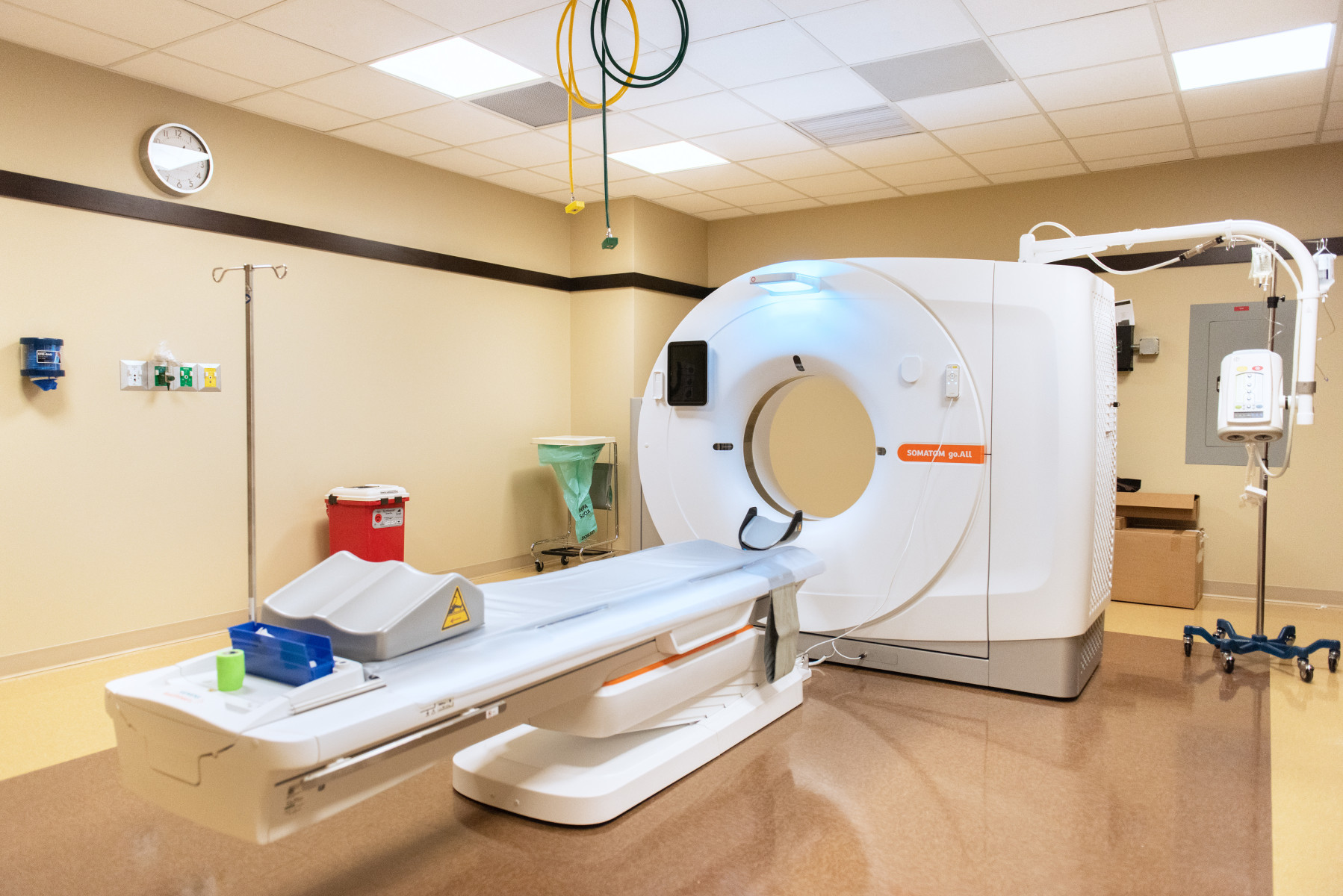
This story was published in the April 2024 issue of the Breakthroughs newsletter.
The World Health Organization estimates that 50 million people worldwide are affected by neurodegenerative disorders – primarily characterized by motor neuron dysfunction and loss – and that number is expected to rise as our population ages.
Recent studies from Feinberg scientists have uncovered new insights into these disorders, elucidating the mechanisms behind Alzheimer’s disease, Parkinson’s disease and amyotrophic lateral sclerosis, or ALS.
RNA’s role in brain cell death
A study published in Nature Communications showed that RNA interference may play a key role in Alzheimer’s disease. For the first time, scientists identified short strands of toxic RNAs that contribute to brain cell death and DNA damage in Alzheimer’s and aged brains. Short strands of protective RNAs are decreased during aging, the scientists reported, which may allow Alzheimer’s to develop.
Alzheimer’s disease, which is expected to affect about 6.7 million patients in the U.S. in 2023, results in a substantial loss of brain cells. But the events that cause neuron death remain poorly understood.
“Nobody has ever connected the activities of RNAs to Alzheimer’s,” said corresponding study author Marcus Peter, PhD, the Tom D. Spies Professor of Cancer Metabolism and a professor of Medicine in the Division of Hematology and Oncology. “We found that in aging brain cells, the balance between toxic and protective sRNAs shifts toward toxic ones.”

In the study, scientists analyzed mouse models of Alzheimer’s disease , the brains of young and old mice, induced pluripotent stem cell-derived neurons from normal individuals (both young and aged) and from patients living with Alzheimer’s disease, as well as the brains of a group of older individuals over 80 with memory capacity similar to individuals 50 to 60 years old, and multiple human brain-derived neuron-like cell lines treated with amyloid beta fragments, a possible trigger of Alzheimer’s.
The findings may lay the foundation for a new avenue of treating Alzheimer’s and potentially other neurodegenerative diseases.
“Our data support the idea that stabilizing or increasing the amount of protective short RNAs in the brain could be an entirely new approach to halt or delay Alzheimer’s or neurodegeneration in general,” Peter said.
Mutated protein linked to aggressive Parkinson’s
Parkinson’s disease is the second-most common neurodegenerative disorder in the U.S., after Alzheimer’s disease. The National Institutes of Neurological Disorders and Stroke estimates that as many as one million Americans are living with Parkinson’s. Motor dysfunction, a hallmark of Parkinson’s, is caused by the progressive loss of dopaminergic neurons in the midbrain.
Feinberg investigators led by Dimitri Krainc, MD, PhD, found that a mutated protein expressed in lysosomes may contribute to Parkinson’s disease, according to a study published in the Journal of Cell Biology.

Lysosomes, organelles that function as recycling plants inside cells, have previously been associated with several neurodegenerative diseases, including Parkinson’s disease, according to Krainc, the Aaron Montgomery Ward Professor and chair of the Davee Department of Neurology and senior author of the study.
Krainc and his collaborators used live-cell microscopy to investigate the role of VPS13C, a gene linked to a rare and aggressive form of early-onset Parkinson’s disease, in regulating lysosomal function in dopaminergic neurons derived from human-induced pluripotent stem cells.
“We found that VPS13C regulates lysosomal health in dopaminergic neurons, the primary cell type that is affected in Parkinson’s disease,” said Krainc, who also directs the Simpson Querrey Center for Neurogenetics. “We further discovered that VPS13C regulates lysosomal maintenance through the interaction with a ‘helper protein’ called Rab10. When this protein is present on the lysosomal membrane together with VPS13C, it keeps lysosomes functional and healthy.”
Mutations in VPS13C lead to its loss of function in patient-derived dopaminergic neurons, according to the study.
“The loss of VPS13C function that is seen in Parkinson’s neurons causes lysosomes to become larger and form more contacts with each other. This disrupts the ability of lysosomes to move throughout neurons and respond to cellular stress,” Krainc said. “Furthermore, lysosomes become less efficient in breaking down unwanted debris and other cellular components that need to be recycled which in turn leads to dysfunction and degeneration of dopaminergic neurons.”
Now, Krainc and his colleagues hope to target VPS13C to restore lysosome dysfunction in Parkinson’s disease, representing a potential new avenue toward treatment for the condition.
Understanding mechanisms behind ALS
Recent studies from the laboratory of Evangelos Kiskinis, PhD, associate professor in the Ken and Ruth Davee Department of Neurology’s Division of Neuromuscular Disease and of Neuroscience, have uncovered novel cellular mechanisms that are involved in two types of genetic amyotrophic lateral sclerosis, or ALS.
The findings, published in Science Advances, improve the understanding of ALS, a progressive neurodegenerative disease that attacks motor neurons in the brain and spinal cord, and provides support for the future development of targeted therapies.

An estimated 32,000 individuals are currently living with ALS in the U.S., according to the Les Turner ALS Foundation. There are two types of ALS: sporadic (non-genetic), which makes up more than 90 percent of all ALS cases, and familial (genetic).
In theScience Advances study, the Kiskinis team studied a type of familial ALS caused by a repeat genetic sequence of the C9ORF72 gene, which is the most common genetic cause of ALS.
According to Kiskinis, healthy individuals may have 20 repeats of C9ORF72 in their genome, while patients with ALS can have thousands. These repeats are transcribed and translated through non-canonical pathways which produce irregular RNAs and dipeptides (molecules with two amino acids bonded by a peptide) in neurons.
Kiskinis’ team hypothesized that this cascading effect is what leads to gain-of-function toxicity in motor neurons in this type of ALS. This prompted them to investigate the mechanisms that make these repeated dipeptides (R-DPRs) increasingly toxic.
Using computational and experimental techniques, the investigators found that R-DPRs have a strong binding affinity for RNA molecules. Then, they used a technique called crosslinking immunoprecipitation, or CLIP-seq, to isolate specific RNA fragments and found that R-DPRs bind exclusively to ribosomal RNAs. Specifically, the poly-GR dipeptide binds to ribosomal RNA, which impairs ribosomal homeostasis, a process essential for cell differentiation and the overall makeup of a cell.
Using these findings, the investigators then designed an RNA “bait,” which tricks poly-GR into binding with something that appears to be ribosomal RNA —or in this case, the bait. In both in vivo models and in induced pluripotent stem cell neurons derived from patients with C9ORF72 mutations, the bait molecule inhibited toxicity.
“We showed using multiple different approaches that the molecule we designed — the ‘bait’ —binds very highly and specifically to this poly-GR protein, and in binding to it prevents it from binding to ribosomal RNA and prevents it from going into the nucleus, which is where it becomes most toxic,” Kiskinis said. “It serves as a proof of principle to the idea that an RNA molecule that has these ‘bait’ capacities can be therapeutic and it also strengthens the hypothesis that a lot of the toxicity from the C9ORF72 mutation is associated with impairing ribosomal biology.”
The investigators are now optimizing the chemistry of the bait molecule and aim to test it in other models of ALS, according to Kiskinis.
These studies demonstrate the breadth of research happening at Feinberg across neurodegenerative diseases. Continued research will inform breakthroughs in the field and improve the understanding of and future treatment for these complex diseases.






